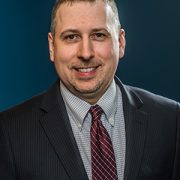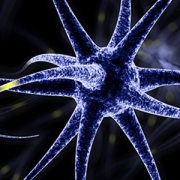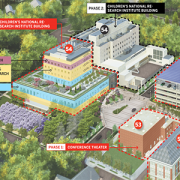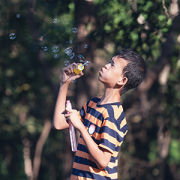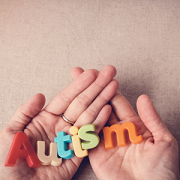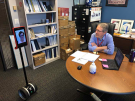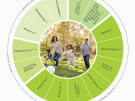Clinicians and transgender autistic youth create support model

Young people with the co-occurrence of autism and gender diversity and their families partner with clinical researchers to understand care needs and how care providers can meet those needs.
The first ever set of specific recommendations to support transgender autistic young people was co-created by these youth and their families working hand-in-hand with clinical experts. The resulting model offers clinicians a set of concrete ways to provide this unique population the support they need.
The recommendations, A Clinical Program for Transgender and Gender-Diverse Neurodiverse/Autistic Adolescents Developed through Community-Based Participatory Design, were published by the Journal of Clinical Child and Adolescent Psychology on May 4, 2020.
“The idea of patients helping to co-design their own care isn’t new, but including the perspectives of autistic youth in their own care is quite new,” says John Strang, Psy.D., who directs the Gender and Autism Program within the Center for Autism Spectrum Disorders at Children’s National Hospital.
He continues, “And for the many youth who are both transgender and autistic, including their voices and perspectives in their clinical care is critical. Without their input, there is a great risk for misunderstanding their needs – and for marginalization.”
“This was an important process in which to participate, and will hopefully help those — autistic people, trans people, and autistic trans people alike — who often only see themselves represented by cisgender, neurotypical researchers and providers. It is a relief to be a part of creating something like this,” adds Marisa Alexa McCool, a co-researcher who is an autistic transgender woman.
The new publication builds on previously published broad clinical guidelines for providers, now integrating the perspectives of autistic transgender individuals themselves. The program includes specific approaches for supporting young people in their diverse needs, and identifies three key components central to this care:
- Helping autistic, gender-diverse young people build community together, which they need and often want, in contrast to clichés about lack of desire for social contact in autism. Many autistic transgender young people prior to entering clinical care have never met another person who is transgender and autistic. The connections that they built with one another through this new clinical care model were critical in helping them develop a positive sense of identity and to know that they are not alone in this world.
- Introducing the youth to a broad spectrum of gender diverse and/or neurodiverse role models helps make possibilities for their future more concrete, and builds a sense of hopefulness and pride. Abstract concepts such as gender or future gender can be particularly challenging for autistic youth. The new care model addresses this by providing these youth opportunities to meet and interact with a range of living role models who represent various gender identities as well as neurodiversity experiences. “Being able to see and hear about the diverse journeys of adults who have already navigated gender and/or autism-related diversity has been helpful in making the various options more tangible for gender diverse autistic youth,” says Dr. Strang. “The chance to meet role models with different gender-related experiences – transgender, cisgender, exploring – has helped autistic gender diverse youth to better figure out what is most true for them and what they need from us.”
- Supporting the gender expression needs of autistic transgender youth through gender style coaching. Because of autism-related sensory sensitivities and problems with planning and social understanding, autistic transgender young people often have difficulty achieving their desired gender transition. Gender-style coaching can help autistic youth reach their gender-related goals in ways that accommodate and support the young person’s autism-related challenges.
The perspectives included in the new clinical program were from a range of ages and backgrounds, as well as across multiple points in time to make sure that as youths’ own views evolved, their evolving needs were captured as well.
The authors created a specific clinical guide to complement the publication, which is available on the Children’s National website.
“We’re so happy to have been able to partner with self-advocates from the autistic transgender and gender diverse communities, youth who are living this experience, and their families, to co-create a community-driven model that can be used for kids seeking guidance and support,” says Dr. Strang.
“We hear over and over again that what parents and care providers really need are concrete tools to support young people with co-occurring autism and gender diversity, so that’s what we sought to do here,” he concludes. “It’s exciting because, for the first time, we have some simple tools to support these kids. And this is critical, because although the co-occurrence of autism and gender diversity has been of great interest to researchers, nearly all studies to date have focused on how many transgender youth are autistic, instead of how to help and support this poorly understood group.”



